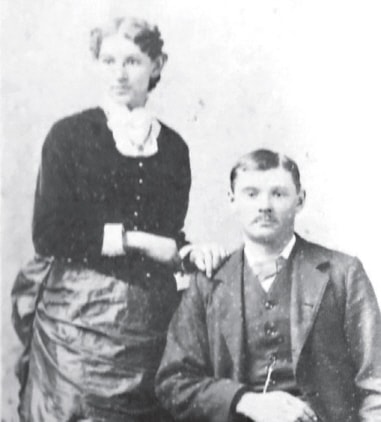A friend has very kindly lent me three excellent history books that vividly depict the colorful history of the pristine Blindman Valley west of Lacombe and Ponoka. This lush rolling expanse encompasses one of the most beautiful valleys in Alberta, where lakes and rivers are prominent, the soil is rich, wildlife is plentiful, and family-operated mixed and dairy farms are leaders of a successful area economy.
The vibrant active area includes the towns of Rimbey, Bentley, and Bluffton, as well other villages and districts. Following is a vivid tale (from the Over the Years 1892-1982 history book) of the first settlement in the Rimbey area, where pioneer families braved the elements to establish new homesteads and built their districts and communities into the future.
With the exception of fur trader Anthony Henday, explorer David Thompson, and renowned artist Paul Kane, the Blindman Valley was basically occupied by tribes of Cree and Blackfoot Indians living off the land and gathering furs for the new trading posts. The Ole Boode family was the first white family to stop for any length of time, arriving from Minnesota in 1895 and settling with their eight sons and one daughter on the Blindman River south of Gull Lake and west of Blackfalds. Due to ongoing drought in the Dakotas and Montana, settlers began to flock into the area in great numbers, arriving in Lacombe and then moving west in search of low-lying land for pasture and hay.
The year 1898-99 was very dry and whatever precious hay they had was cut and stacked in the lower areas. It started to rain on July 26, and it poured night and day until Sept. 13, 1899, at which time the low areas had transformed into sloughs and lakes, and most of the lower land was under 20 feet of water. Boode, his family, and his father drove their cattle to the higher ground, where neighbour Cook owned a ranch at the south end of Gull Lake, which is still called Cook’s Point. They later followed the Blindman River until they came to what now is Rimbey, cutting hay from the south slopes, while putting up a house and barn, looking after that bunch of cattle through the winter of 1899-1900, during which time they only other person they saw during that time was an Indian on his way to Buck Lake. Game was always plentiful, and an ample supply of deer, rabbits, partridge, and fish highlighted the varied diet of this hardy and growing pioneer family.
The founding of Rimbey (written by Katie Loretta Adams)
These excerpts were taken from the first issue of the Rimbey Pioneer on Sept. 5, 1919.
“On the first day of April 1900 I was down at the Lacombe station with Father Lacombe when an immigrant train pulled in from the south with 38 passengers on it. They were all looking for land to build homes on and settle in the new west, and among them were four families of Rimbeys who were very anxious to homestead. We told them of the country along the Blindman River and we offered to show them where it was.
“It would be the first day of July that I started out from Lacombe with eight white men, including Mr. Gwinn, and the four Rimbey boys: brothers Ben, Jim and Sam, and nephew Oscar. They all had teams, and I led them through sloughs and swaps until we came to Gull lake, where we had to wade through the south end, as there was no road around it. I took them to dinner at MacPhersons’ (where Bentley now is), then after reluctantly jumping the horses over an outlet, we followed the Blindman for eight miles and camped overnight at the Iddings’ place.
“After looking over the land the next day they decided to homestead there when it had been surveyed. Ben and Louisa Jane Rimbey would return with their family the next month, and the first log house was built in Township 42, where the Jim Rimbey home later stood. The four Rimbey brothers and Mr. Gwinn were the first pioneer settlers in the Blindman Valley, and were later joined on the ridge by 18 families from Kansas.
“The town was later named after the Rimbey family, and it was a very good name. The first grocery store was established in a little room of the Rimbey’s house, was called the White Star grocery, and owned by Charlie Townsend. It took the settlers 18 months to build the first school, which the little white children really appreciated, and where all the pioneer families first met on Sundays for church or other events.
“By 1919 Rimbey was gradually becoming one of the busiest and largest towns in the west, were blessed with a growing population of happy and industrious people, and had a great baseball team! In the same year the railway line was completed from Lacombe, making it a two-hour trip instead of the week long trek by oxen of days gone by. Eventually along that route where the buffalo and deer used to run wild, we now see nothing more ferocious than the gopher.
“But to achieve the steady progress and successes these hardy pioneers had to also endure many hardships along the way. The new land was all covered with willows and trees, which all had to be cut by hand, as in the beginning there were few farm implements available.”
Today Rimbey and surrounding towns and districts situated in the magnificent Blindman Valley are thriving and always proudly carrying on the great efforts and traditions of their ancestors. Watch for more Reflections stories in the Ponoka News, and hopefully our friendly neighbours to the west may find a way to feature some of the amazing history of your area in future editions of the Rimbey Review.
By Mike Rainone - For the News
